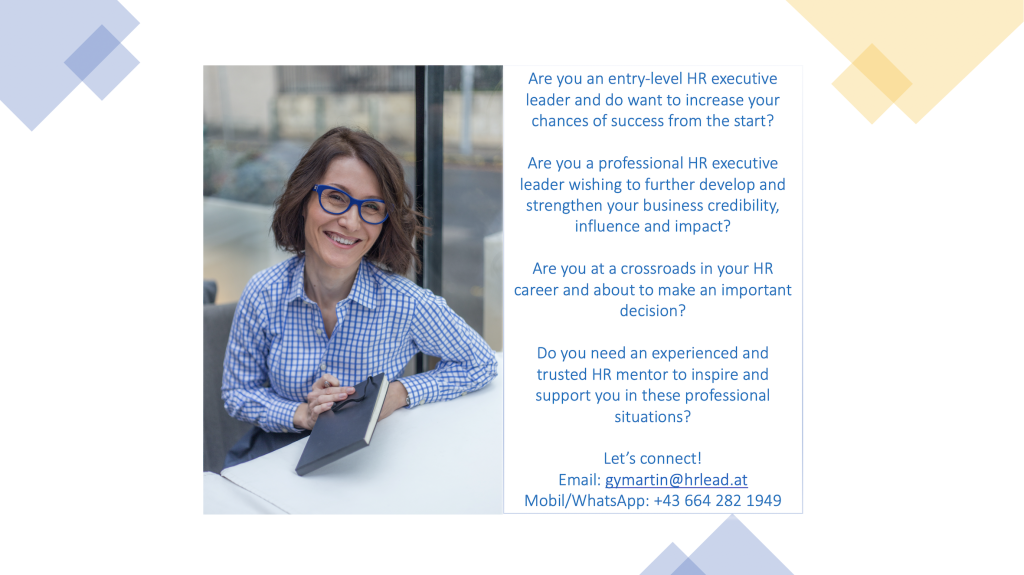“I’m sorry, but I’m confused. You know that I’m completely on-board with doing more for this topic, but how does this initiative support our strategy? How does this fit with our business goals? And how all of these initiatives fit together?” As HR leaders, we’ve all been asked these questions by the CEO and have sometimes found it difficult to answer. What does strategic action mean and why is it necessary? How is strategic action reflected in HR practice? How can you demonstrate strategic action on a daily basis?
Welcome to the second part of the How to become a strategic HR leader series.

Strategic alignment
As the first part of this series showed, strategic thinking enables us to understand the complex relationship between our organization and its environment, and to use this knowledge to make decisions that will facilitate the sustainable business success of our organization. The second most important element of strategic leadership is strategic action. What does strategic action mean? It means setting out strategic priorities in feasible action plans and implementing them effectively. “Strategy without execution is useless—Execution without strategy is aimless.”
The customer experience
Let’s take a highly relevant business example. Regardless of the industry, one of the factors directly affecting business performance is the customer. Thanks to digital technologies and well-informed customers, companies in different industries can create exceptional customer experiences. The customer experience is the emotional imprint and memory of all interactions between the customer and the brand. Companies with the highest customer satisfaction scores have generated twice as much shareholder value over the past ten years as those with average scores. Customer experience can be the greatest growth opportunity but also the biggest challenge of the decades ahead.
The coronavirus pandemic, working in home office and physical/social distancing have brought about a distinct change in consumer and customer behaviour, intentions, needs and expectations. This shift has accelerated the digital transformation, resulted in new customer profiles and urged brands to rethink the online and offline customer experience. Central to the customer experience is meaningful interaction, a focus on brand loyalty and a desire for companies to offer their customers a personalized and hyper-efficient product and/or service.
The customer is EVERYONE’S business, also the HR Department plays a make or break roll in it, because employees give life to the customer experience, and they can create powerful customer advocates when engaged at work.
Strategic action in HR practice
When one of the key objectives of corporate strategy is to enhance customer experience, this can be achieved by consciously aligning organizational culture, structure, operations, systems, communication, people and decisions with the strategy of the organization in both the short and the long term.
As an HR leader, you first need to consider where the HR function can contribute to improving customer experience and have a clear impact. I suggest that the identification and prioritization of ‚areas of impact‘ should be done in agreement with business leaders and the HR team. Here are some questions to encourage joint thinking:
- What is your company’s vision for customer experience and where are you currently in the process of achieving it? What are the human gaps, needs and opportunities?
- What does customer-centric culture mean and how does it apply to your company?
- How can the HR function contribute to break down silos, establish and maintain strong cross-functional cooperation?
- How are organizational structure, processes and communication designed to maximize customer experience? How can technology support this?
- How is customer experience included as a benchmark for hiring, performance evaluation, education (CX knowledge/skills), reward and talent management processes?
- How employee engagement can be increased?
- How does customer feedback amplify through employees? How is the voice of the customer from the employee’s perspective and how does leadership empower employees to create truly innovative customer experiences?
- How do you harmonize customer and employee experience and how do you measure the results of investments in customer and employee experiences (ROX)?
It goes without saying that enhancing customer experience is included in the HR strategic plan as a key strategic initiative. To achieve the set target, a feasible, short- and long-term, detailed HR action plan (what, how, with whom, when, resources to be provided, metrics, expected impact) must be determined. Effective and consistent execution of the action plan will lead to the realization of the strategy.

Focusing on activities that deliver results
While the majority of companies have no problem with articulating their strategic initiatives, they have more trouble with translating them into achievable business goals. In addition, the success rate of implementing the strategy is incredibly low compared to the average of companies.
As an HR leader, you need to focus on strategic execution to achieve business goals. Let’s look at what you can do and how you can demonstrate this on a daily basis.
- Set objectives, responsible employees, and metrics in the action plan! A small number of clearly defined objectives are more likely to be achieved. Involve, inform, and empower teams and individuals to take ownership of the goals and take actions to achieve them. Remind them of the business vision often and be enthusiastic. Communicate consistently and clearly to reduce resistance to changes and increase engagement of the participants.
- Remind yourself daily of your why! Keep the business vision and the content of the action plan in mind when carrying out daily activities. Instead of juggling a growing number of priorities, focus on the essential activities that drive the business forward. Ensure that HR initiatives form a coherent whole and reinforce each other’s impact. It is part of maintaining the focus as well when you simply say no or ask for a postponement of ideas or assignments that are not linked to the action plan or do not move it forward.
- Do follow-ups! It is essential to periodically assess the progress of projects/processes with your fellow directors and measure the results against the baseline and target. Ensure that HR activities and efforts remain in line with the activities and efforts of other departments in the company. It is a considerable learning process, where you are constantly adapting, acting, reflecting, and agilely recalibrating the original plan as needed.
- Think long-term! Despite the VUCA environment (Volatile, Uncertain, Complex, Ambiguous), the overwhelming noise, the abundance of stimuli and messages, and the rapid succession of renewal processes, don’t forget to make decisions on HR priorities that are in line with the short and long-term strategic direction of the company.
- Remain proactive! Throughout the execution of the strategy, actively seek contact with your fellow directors, try to get familiar with their perspectives, and keep yourself informed of expected changes and their impact on projects. Some of the goals are achievable in the short term (maximum 6 months), but many require more time and attention (e.g. culture change). A lot depends on how motivated, committed, and persistent you can stay in the long term.
By becoming able to act strategically, you’ll play a key role in the implementation of your organization’s business strategy.
Inspirations: Take these steps to translate strategic concepts into effective business goals by Fairleigh Dickinson University, 20 reasons why strategy execution fails by Jeroen Kraaijenbrink


